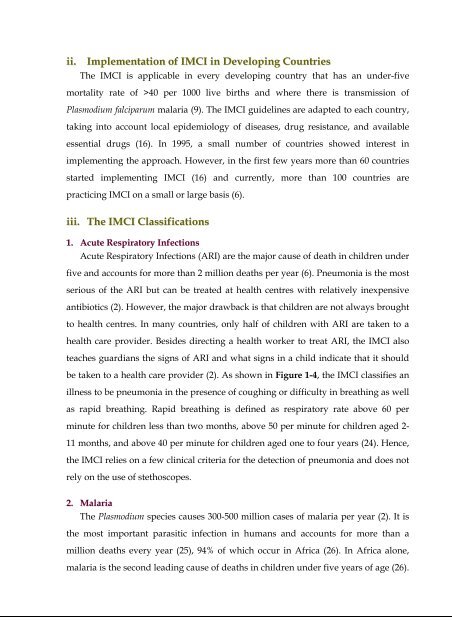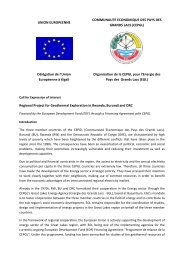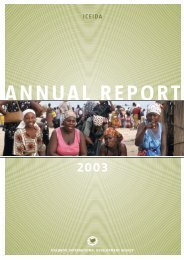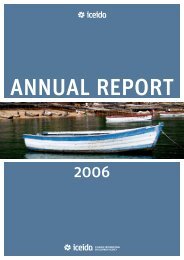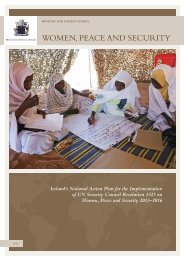The Implementation of Integrated Management of Childhood Illness ...
The Implementation of Integrated Management of Childhood Illness ...
The Implementation of Integrated Management of Childhood Illness ...
You also want an ePaper? Increase the reach of your titles
YUMPU automatically turns print PDFs into web optimized ePapers that Google loves.
ii. <strong>Implementation</strong> <strong>of</strong> IMCI in Developing Countries<br />
<strong>The</strong> IMCI is applicable in every developing country that has an under-five<br />
mortality rate <strong>of</strong> >40 per 1000 live births and where there is transmission <strong>of</strong><br />
Plasmodium falciparum malaria (9). <strong>The</strong> IMCI guidelines are adapted to each country,<br />
taking into account local epidemiology <strong>of</strong> diseases, drug resistance, and available<br />
essential drugs (16). In 1995, a small number <strong>of</strong> countries showed interest in<br />
implementing the approach. However, in the first few years more than 60 countries<br />
started implementing IMCI (16) and currently, more than 100 countries are<br />
practicing IMCI on a small or large basis (6).<br />
iii. <strong>The</strong> IMCI Classifications<br />
1. Acute Respiratory Infections<br />
Acute Respiratory Infections (ARI) are the major cause <strong>of</strong> death in children under<br />
five and accounts for more than 2 million deaths per year (6). Pneumonia is the most<br />
serious <strong>of</strong> the ARI but can be treated at health centres with relatively inexpensive<br />
antibiotics (2). However, the major drawback is that children are not always brought<br />
to health centres. In many countries, only half <strong>of</strong> children with ARI are taken to a<br />
health care provider. Besides directing a health worker to treat ARI, the IMCI also<br />
teaches guardians the signs <strong>of</strong> ARI and what signs in a child indicate that it should<br />
be taken to a health care provider (2). As shown in Figure 1-4, the IMCI classifies an<br />
illness to be pneumonia in the presence <strong>of</strong> coughing or difficulty in breathing as well<br />
as rapid breathing. Rapid breathing is defined as respiratory rate above 60 per<br />
minute for children less than two months, above 50 per minute for children aged 2-<br />
11 months, and above 40 per minute for children aged one to four years (24). Hence,<br />
the IMCI relies on a few clinical criteria for the detection <strong>of</strong> pneumonia and does not<br />
rely on the use <strong>of</strong> stethoscopes.<br />
2. Malariaa<br />
<strong>The</strong> Plasmodium species causes 300-500 million cases <strong>of</strong> malaria per year (2). It is<br />
the most important parasitic infection in humans and accounts for more than a<br />
million deaths every year (25), 94% <strong>of</strong> which occur in Africa (26). In Africa alone,<br />
malaria is the second leading cause <strong>of</strong> deaths in children under five years <strong>of</strong> age (26).<br />
14


